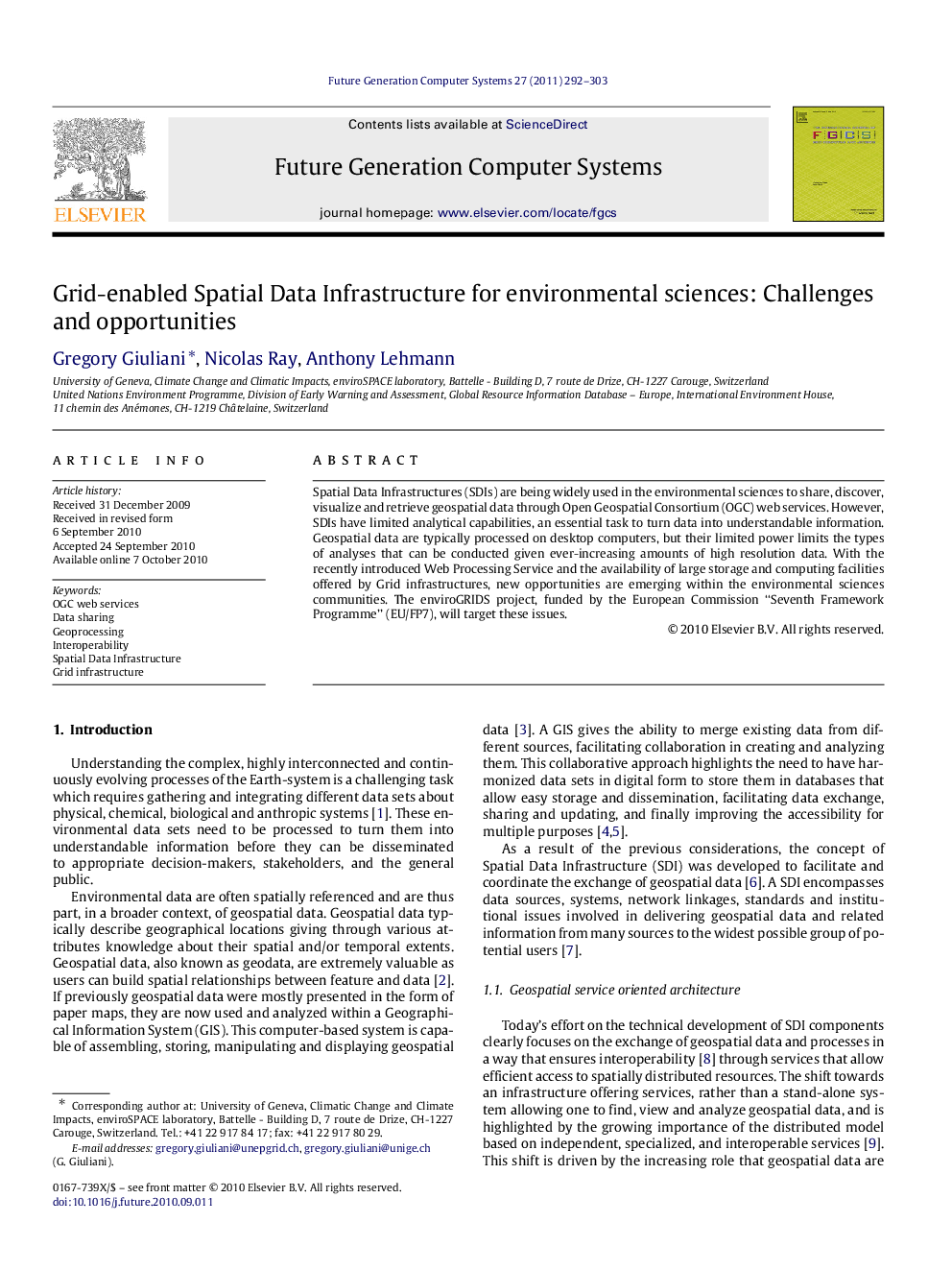| Article ID | Journal | Published Year | Pages | File Type |
|---|---|---|---|---|
| 424725 | Future Generation Computer Systems | 2011 | 12 Pages |
Spatial Data Infrastructures (SDIs) are being widely used in the environmental sciences to share, discover, visualize and retrieve geospatial data through Open Geospatial Consortium (OGC) web services. However, SDIs have limited analytical capabilities, an essential task to turn data into understandable information. Geospatial data are typically processed on desktop computers, but their limited power limits the types of analyses that can be conducted given ever-increasing amounts of high resolution data. With the recently introduced Web Processing Service and the availability of large storage and computing facilities offered by Grid infrastructures, new opportunities are emerging within the environmental sciences communities. The enviroGRIDS project, funded by the European Commission “Seventh Framework Programme” (EU/FP7), will target these issues.
Research highlights► Current SDIs have limited capabilities to analyze high-resolution data. ► Grids have the potential to underpin SDIs services and resources. ► Interoperability between Grids and SDIs is a key requirement. ► OGC Web Processing Service standard appears the ideal candidate to be gridified. ► Grid-enabled SDIs may become a powerful tool within environmental sciences.
